Why Does Toothpaste Make Food Taste Funny?
This week, we're taking on your science brainteasers!& We find out why toothpaste ruins other flavours, whether humans have a mating season and why food goes in multicoloured, but comes out brown...& Plus, fighting Fido's fleas with fungus, stressed men take more risks, and predicting if hepatitis B will lead to liver cancer.& In Kitchen Science, we make a fruity fireball with orange peel.
In this episode
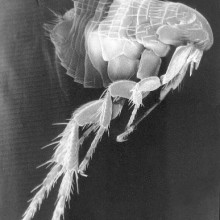
No fleas on me
A chemical made by a fungus might hold the key to a new anti-flea treatment for dogs and cats.
 Writing in the Journal of Medicinal Chemistry, Merck scientist Peter Meinke and his colleagues explain how they have developed an orally-active anti-flea and tick drug based on a chemical called nodulisporic acid, which is a metabolite produced by the nodulisporium fungus. These fungi live on dead or dying plant matter and are generally not a threat to humans but the nodulisporic acid the make has been shown in the past to behave as a neurotoxin in insects and other invertebrates. Amongst these vulnerable species the chemical blocks ion channels that are critical for the process of neurotransmission, leading to paralysis.
Writing in the Journal of Medicinal Chemistry, Merck scientist Peter Meinke and his colleagues explain how they have developed an orally-active anti-flea and tick drug based on a chemical called nodulisporic acid, which is a metabolite produced by the nodulisporium fungus. These fungi live on dead or dying plant matter and are generally not a threat to humans but the nodulisporic acid the make has been shown in the past to behave as a neurotoxin in insects and other invertebrates. Amongst these vulnerable species the chemical blocks ion channels that are critical for the process of neurotransmission, leading to paralysis.
As vertebrates, including mammals like humans, dogs and cats, lack the ion channel targeted by nodulisporic acid the compound is harmless to us. The problem is how to make sufficient quantities of the chemical. It is a large molecule comprising a complex series of interlocking rings of carbon atoms and other active groups including oxygen and nitrogen, which means that it is very difficult to make in a test tube, at least in a cost-effective manner. The team therefore set about modifying the chemical structure to arrive at a molecule that retained or even boosted the insect-killing capacity of the original chemical, but was simpler and cheaper to make.
They achieved this by retaining the core of the nodulisporic acid molecule, which has been shown to be critical to the agent's activity, and then tacking on a range of secondary chemical groups. They were able to produce initially 335 candidate compounds, which were whittled down to a final fourteen by testing them for toxicity against fleas and for safety in mice. These fourteen compounds were then tested in dogs and cats by administering a single dose of the agent, exposing the animals to fleas at various time points and then combing the fleas back out later to counting how many had died.
Remarkably, a single dose of one of the compounds, N-tert-butyl nodulisporamide, was effective at keeping animals flea-free for six to eight weeks, and it also worked against ticks too.
"No commercial product has the unique oral properties of nodulisporamide, and its systemic efficacy profile compares favourably to currently marketed topical agents," say the researchers.
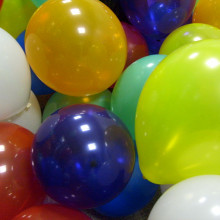
Stressed Men Take More Risks
Stressed men take more risks, while stressed women play it safe, according to research published in the Journal PLoS One this week.
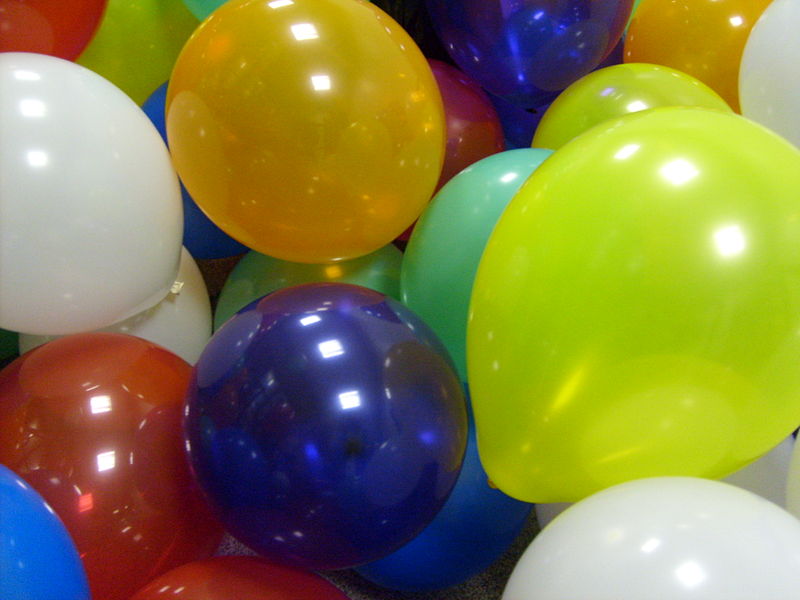 Nichole Lighthall, from the University of Southern California Davis School of Gerontology, asked volunteers to play a computer game designed to measure risk taking, called the Balloon Analogue Risk Task. In the game, participants pump up a balloon, winning a small amount of money per pump, until they stop and collect the cash or the balloon pops and they lose it all. The balloon would pop at random somewhere between 1 pump and 128 pumps, so for each pump the risk of losing increases and the potential gain decreases.
Nichole Lighthall, from the University of Southern California Davis School of Gerontology, asked volunteers to play a computer game designed to measure risk taking, called the Balloon Analogue Risk Task. In the game, participants pump up a balloon, winning a small amount of money per pump, until they stop and collect the cash or the balloon pops and they lose it all. The balloon would pop at random somewhere between 1 pump and 128 pumps, so for each pump the risk of losing increases and the potential gain decreases.
Then they did the same test again with a group of volunteers under stress. They stressed them out by making them hold their hands in ice cold water, and measured the levels of the stress hormone cortisol so they were certain this was a stressful situation.
Under stress, men take more risks and women are more risk averse, even though they take similar risks when not stressed. Women inflated the balloon an average of 32 times, over 30% less than men, who pumped an average of 48 times. This may correlate to risky behaviours in the real world, such as gambling, smoking, unsafe sex and illegal drug use.
So why should this be?
"Evolutionarily speaking, it's perhaps more beneficial for men to be aggressive in stressful, high-arousal situations when risk and reward are involved," said Dr Lighthall. "Applied to financial risk taking, it's akin to competition for territory or other valuable resources."
So men may have evolved to respond to stress with a flight or flight response - taking bigger risks, while women evolved a more conservative response, which could be beneficial as taking risks in pursuit of resources could "endanger the lives of dependent offspring."

11:52 - A rush of blood to the head
A rush of blood to the head
We often talk about angry people as having had a metaphorical sudden rush of blood to the head, but new research from scientists in the US, published in the journal Cardiovascular Ultrasound suggests that it might actually be true...
This is research by Tasneem Naqvi and Hahn Hyuhn, who were using ultrasound to look at blood flow in the brain in response to mental stress, and also how the main artery to the brain, the carotid, responds under these circumstances. They studied 10 healthy young people, aged 19 to 27, 20 older people, aged 38 to 60, and 28 people with high blood pressure.
The researchers set the volunteers a series of tasks designed to cause mental stress, including reading, maths tests, and remembering situations when they were angry, while using ultrasound to monitor the effects on blood flow in the brain, blood pressure, and heart rate.
The scientists discovered that in healthy volunteers, the blood flow to the brain increased under mental stress, through a process called vasodilation - where the blood vessels get wider to allow more blood through. But in patients with high blood pressure, known as hypertension, they didn't see this vasodilation, and found no significant changes in blood flow in the brain.
Obviously, this is only a very small study, but it does have some interesting implications. The researchers suggest that the lack of vasodilation in people with high blood pressure could be a risk factor for strokes. It's known that a lack of vasodilation in the heart can lead to an increased risk of something called myocardial ischaemia - a lack of oxygen to the heart muscle.
It will be interesting to see if the lack of vasodilation in people with high blood pressure could increase the risk of stroke - which is a lack of blood and oxygen in certain parts of the brain. And the results also raise the question as to whether a lack of blood flow to the brain could affect mental performance in people with high blood pressure. So the work raises lots of future avenues for research.
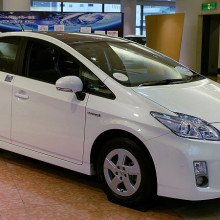
Electric Cars too Quiet
Electric cars have been accused of being too quiet, and posing a risk to the vision impaired, and prompting the Japanese government to review whether to add a noise making device.
 Hybrid vehicles make very little noise when running on the batteries, and have become the country's top selling cars in recent months. A new, cheaper Toyota prius has only been on sale since May, and already received over 200,000 orders, fast becoming the bestselling car on the domestic market.
Hybrid vehicles make very little noise when running on the batteries, and have become the country's top selling cars in recent months. A new, cheaper Toyota prius has only been on sale since May, and already received over 200,000 orders, fast becoming the bestselling car on the domestic market.
The ministry of transport has launched a panel of scholars, vision impaired groups, consumers, police and car manufacturers to discuss how to get around this issue.
No decision has been made on what noise should be made, but they need to find a way to raise caution in those that rely on sound, while being fair to residents who live along roads. They're expected to decide by the end of the year.
I think they should broadcast episodes of the Naked Scientists podcast, so it will be audible, entertaining and educational!
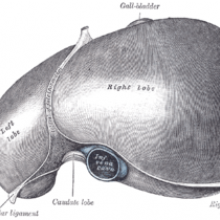
Liver cancer gene link
There are some interesting new results out this week about the link between Hepatitis B infection and cancer, published in the Journal of the National Cancer Institute. Hepatitis B infection is relatively rare in the West, but it's a big problem in sub-Saharan Africa and Asia.
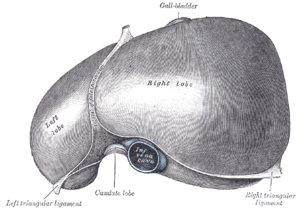 And the bad thing about Hep B infection is that it increases the risk of the most common type of liver cancer called hepatocellular carcinoma. Again, this type of cancer is relatively rare in the West, but it's actually the fifth most common cancer worldwide, and the third most common cause of cancer death. More than eight out of ten cases are in East Asia or sub-Saharan Africa, and most of these are linked to the Hepatitis B infection.
And the bad thing about Hep B infection is that it increases the risk of the most common type of liver cancer called hepatocellular carcinoma. Again, this type of cancer is relatively rare in the West, but it's actually the fifth most common cancer worldwide, and the third most common cause of cancer death. More than eight out of ten cases are in East Asia or sub-Saharan Africa, and most of these are linked to the Hepatitis B infection.
It's a bit of a mystery as to why some people are more susceptible to developing liver cancer when they're infected with hep B than others. And now a new analysis from Guangwen Cao and his team in Shanghai has shed some light on this mystery.
The researchers did something known as a meta-analysis, looking at over 40 studies that included more than 11,500 people infected with Hepatitis B, 2,801 of whom had liver cancer. They were looking at whether mutations in the virus DNA could affect the chances of the carrier developing cancer or not. There have been some previous studies looking at this, but they've been small, and the results haven't been conclusive.
But by collecting together the results from many studies, Cao and his team were able to discover that four certain mutations in Hep B were linked to the development of liver cancer, and were also more likely to crop up in the virus as hepatitis infection progressed from an infection without any symptoms to liver cirrhosis, and then on to cancer.
The researchers suggest that patients with chronic hepatitis B infection should be regularly screened for mutations in the virus, which might help doctors identify those who are likely to go on to get cancer. They can then be offered more aggressive anti-viral treatment
At the moment, there is some debate as to how strongly people should be treated with anti-viral drugs, due to the risks of developing drug resistance, as well as side effects, along with the cost of the drugs. So being able to identify those patients who are at most risk of developing liver cancer, and treating them first, could be a real help.
You can also listen to our special World Hepatitis Day Podcast...

20:39 - The World Conference of Science Journalists
The World Conference of Science Journalists
with Laura Soul
Chris - Earlier this week, it was the World Conference of Science Journalists. Nearly a thousand science writers and broadcasters from all over the world got together in Westminster, not at the houses of Westminster, but down just the road from there, to help each other out and to share some ideas and here's Laura Soul to tell us a bit more.
 Laura - This week, London played host to the world's biggest conference for science journalists. Science writers and broadcasters from all corners of the globe gathered to discuss the challenges of reporting scientific stories in a media who are obsessed with celebrity and gossip. Sallie Robins, Conference Co-Director explained why this year's conference was particularly important.
Laura - This week, London played host to the world's biggest conference for science journalists. Science writers and broadcasters from all corners of the globe gathered to discuss the challenges of reporting scientific stories in a media who are obsessed with celebrity and gossip. Sallie Robins, Conference Co-Director explained why this year's conference was particularly important.
Sallie - The World Conference of Science Journalists is an international gathering of journalists from around the world. So, they can all come together and look at the profession of science journalism, what will happen in the future, how the jobs are changing, and who consider scientific issues that are key, right across the world. There's some parts in the world particularly in the United States, it does seem to be a profession in crisis, very few staff positions left in science journalism on newspapers, lots of newspapers folding all together. By contrast, in other parts of the world, we heard from an Arab science journalist and, you know, things are very much going on up there and in Africa. There's a bid increase in the profession. So, it's so quite interesting contrasts. So, I think a lot of people are interested to know where things probably go and what future might hold for them.
Laura - At first glance, it may seem the challenges for journalists in Africa have little in common with those in the West. But Ake Gimo from the Development Communications Network in Nigeria, feels that science reporting needs a global perspective.
Ake - There's a lot of commonalities when it comes to issues around the world. Issues of science is the essence of life and this is an opportunity to learn what's really going on and how do we address those issues. We think globally, but we have to act locally. That is the essence of the whole thing.
Laura - As well as facing future challenges, the conference was a chance to celebrate the success of journalists who've shaped the world. Andre Picard of Canada's Globe and Mail helped to expose one of Canada's biggest public health scandals.
Andre - I wrote about tainted-blood a lot. It's a story of blood that was infected with HIV and with hepatitis, and this became a big political scandal in Canada because of government in actions and cover-ups and document shredding related to this. But it started out as a medical issue, became a big social and political issue for us. What we found was the worst ever health scandal in Canada that about 4,000 people infected with HIV AIDS and more than 10,000 with hepatitis. So, very large numbers of people infected through a product that was supposed to save their lives which is blood and blood products.
Laura - This year's conference, saw delegates invited to London but the venue for the 2011 conference is somewhat more exotic. Cairo, Pallab Ghosh, BBC science correspondent and outgoing President of the World Federation of Science Journalists explained why Egypt was the top choice.
Pallab - Well, we had four really strong bids, Finland, Uganda, Kenya, and a joint bid by the Arab Science Foundation, and the American Science Association. It was a difficult choice but at the end of the day, one of the things that was important to the board was the culture that previous conferences it build which is about critical challenging science journalism. The value added that science journalist bring is to ask the awkward questions. We felt the vision provided by the joint U.S. and Arab bid would provide that.
Laura - As the host of the next conference becomes the president of the World Federation, Pallab passes his title on to Nadia El-Awady, who have high hopes for the Cairo conference.
Nadia - We're going to bring people to a different part of the world for this conference. For the past three conferences, it's been in the developed world. This will be a chance to bring people to a completely different part of the world where we're going to be representing the Arab world and Africa, we're going to be working closely with other Arab countries and other African countries. We really hope that the journalists when they come to the country and then hopefully, would be able to visit the region afterwards will find different kinds of stories to cover. They'll also be able to learn how we, as journalists in our part of the world work, what kind of challenges we face and how we overcome these challenges.
Laura - Delegates at the World Conference of Science Journalists had a great opportunity to meet people from all over the globe and we'll return home with fresh ideas to improve science reporting, which will be essential in helping people to face the challenges we will see in the future.
Why does brushing your teeth alter the flavor of substances afterwards?
Ben - It's a great effect and it's a lovely, lovely question because I actually had - I had to look this up and as soon as I read the question, I thought, "That's brilliant! Why didn't I look this up before?" But it has all to do with the substance in toothpaste called sodium laureth sulfate. There's a few similar chemicals that do the same thing. It's a surfactant which means that it lowers the surface tension of a liquid.Kat - Those are classic cleaners, aren't they?Ben - Yes. You'll find it in detergents, you'll find it in all sorts of different things that rely on breaking surface tension, and it's in the toothpaste, to make sure that you get a good foam from the toothpaste while you clean your teeth and look a bit rabid.Kat - Speak for yourself...Ben - But they also interact with that taste buds in two key ways: They inhibit the taste buds that perceive sweetness, so whatever you eat afterwards will taste less sweet and then they break up fatty molecules called phospholipids and these phospholipids live on the surface of our tongue, and they inhibit the receptors for bitterness. So, not only do we get the effect through the knocking down of the sweetness, but actually boosting the bitterness that you get as well. So, that means anything you eat will taste less sweet and much more bitter which is why orange juice in particular, which we know is normally very sweet, is really quite foul. There's also menthol in there, and that has a temperature effect which fools your sensory nerves into being more sensitive to cold. So, fresh orange juice, fresh from the fridge may sound great and refreshing, will be good with your breakfast, but it'll taste bitter and it will be painfully cold.Chris - I met someone a little while back who's at the Oxford University. He's a chemist and he showed me a wonderful trick with glucose because glucose comes in two 'handednesses'. There's right handed glucose and left handed. What that means is, it's a bit like if I had a glucose molecule and I put it in front of a mirror, you'll have a molecule in one configuration in your hand, you'd have the molecule with its mirror image in the reflection. And nature is just the same. There are both forms of the sugar in nature. It just so happens that the human body uses the D-form, the right handed form. He brought with him some left handed glucose and I tasted it and guess what it tasted like?Ben - I have no idea.Chris - Do you think it's sweet?Kat - Cherries.Ben - I'd assume it would be sweet because it's the same atoms, isn't it? Built into their molecule, just kind of reflected.Kat - No, if it can't be recognized.Chris - No. It tastes like salt, which is salty. It was disgusting. It's just a salty sort of (luhhrr) flavor. It wasn't very nice at all because it's the wrong shape to fit into the taste receptors on your tongue, just like Kat says.Ben - Wow!

Identical Twins have Identical babies?
Kat - This is a really lovely and interesting question. But the answer is unfortunately, no, but they would be very similar. So, what happens when you make babies? What time is it?
Chris - And how long do we have there?
Kat - How much detail.
Chris - Be careful!
Kat - When mummy and daddy love each other very much in a special way, you make babies. You make babies basically by using half of the chromosomes coming from mum and half of the chromosomes coming from dad and when you create egg and sperm cells in your ovaries and your testes, you kind of get a random assortment of whatever chromosomes you happen to have. So, half from mom and half from dad, and they come together to make a baby. And so, this process of random assortment of chromosomes will be going on in both sets of parents to make their children but because he's starting from matching stocks as it were because if you got two identical sets of twins, they have identical sets of chromosomes. So, it's almost like you just have one set of mom and dad's. So, the children they produce would not be identical but they would be very similar, as similar as you are to your brothers and sisters because effectively, it's just like having one set of chromosomes that are randomly sorting and going in to babies. So yes, they wouldn't look identical but they would look very similar. In some families, brothers and sisters can look incredibly similar. So, it would just really depend on the luck of the genetic draw.
Chris - Because identical twins are effectively nature's own natural clones.
Kat - Nature's clones, yes.
Chris - And if you wanted to have clones on tap, you should become a nine-banded armadillo because they naturally make quads. They naturally split their eggs into four identical derivatives which then turn into four genetically identical offspring. I don't know why, but they make quads, quite naturally that are genetically identical to each other, bizarre.
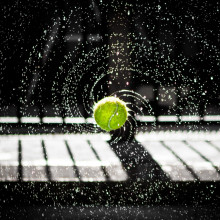
Do men take greater risks than women when playing tennis?
Ben - Well, this basically depends on how stressed they are.Chris - Perfect timing for Wimbledon Week.Ben - Of course, yes. Assuming that the rules of tennis stick out the rules that we've seen with this balloon experiment, then I assume, that yes, when stressed the men will take greater risks and women will perhaps take fewer risks. But it'd be very interesting to see if there's hormonal effect when you're playing such a powerful sport that maybe their hormonal things override it.
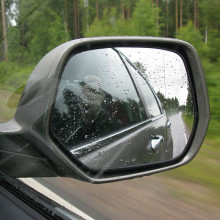
Why does soap stop mirrors from fogging?
Chris - Well the reason that a window or a cold surface mirror goes misty and foggy is because, when you have a hot shower, you have got lots of water molecules in the form of steam or water vapour drifting around in the room.
These then lose some energy to the cold surface and this enables them to condense. So, in other words, instead of being free molecules floating around, they begin to stick together and they form little tiny droplets on the surface because water has attraction between one molecule and another.
So, it pulls in other molecules and it likes to form little droplets and those droplets tend to be little spheres because that's the best arrangement, so you maximize your surface area to volume relationship, so you have the least amount of water in contact with the air for the most volume.
Now, what that means is that you've covered your cold surface in a tiny series of little lenses because the water droplets are of course behaving like lenses and this is why it distorts or deforms the light which is coming back off of their reflective surface and you can't see through it.
If you put a blob of soap, or a smear of soap, up and down on a shiny surface like a mirror, you won't get that mist forming. You will get a clear reflective surface remaining, for the simple reason that the way soap works is that it gets between the water molecules and it stops those interactions of the water molecules being so sticky.
It has what's called a 'surfactant effect' and what that means is that the water molecules, instead of forming lots of little droplets, will instead spread out to form a thin film which is continuous across the surface and although a film of water will refract or bends the light going through it very slightly, they will nonetheless be a straight path to the light in and out and therefore, you will see clearly.
So, this is effectively how anti-misting surfaces work. They have a surface coating which is very attractive to water molecules and instead of forming little droplets, they're pulled into a flat sheet which doesn't bend the light in the same way as the little droplets would.
Ben - So, does grease from your skin do the same thing if you write a message on a window?
Kat - I was going to say, yes because the grease is obviously repellant to water. Oil and water don't mix. But it's a nice thing to do if you have a clean bathroom mirror and you write something on it with your finger then when your housemate or partner goes into the shower and it says, "Don't forget to put the lid back on the toothpaste you get" or something like that. You know, a lovely message like that.
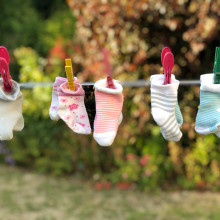
How do clothes dry?
Chris - It's a good question. Water has energy. So, in other words, at any given temperature, the water molecules are vibrating or moving around, proportional to the temperature of the water and when we give energy to water sufficient to raise the temperature to 100 degrees, what that means is that the molecules of water are vibrating or moving around sufficiently fast, that they can readily break the attraction that's holding them onto other water molecules - because water is sticky - and this enables them to escape and get out into the atmosphere as vapour.
Kat - But you don't dry your clothes at 100 degrees, so what's going on here?
Chris - Absolutely, not. What you are doing, though if you, say, put them in a tumble dryer, or hang them on the line, is that you are putting some heat into the clothes; or, just because they're at ambient temperature they're not absolute zero. The atoms and molecules therefore have some energy. Now, because the energy is not shared equally amongst all the atoms or molecules - in other words, if I come up to you and I shake your hand, I can give you some energy - when the molecules are bashing into each other, sometimes some of them will end up transiently with a load of energy from lots of other molecules bashing into them and others will have much less. This means that occasionally, you've got the odd molecule there that has sufficient levels of energy that it can break the bonds holding onto other molecules and it can escape. The reason its slower to dry at less than 100 degrees or however hot you want to make is because obviously, it takes longer for those interactions to occur so that the odd molecule gets enough energy to escape and that's why the sea for instance, can evaporate water when sunlight falls on it and warms up the ocean without having to boil itself. It's just much slower. If you put a pot on the stove, you give lots more energy to lots more atoms and molecules all at once and as a result, more of them have more energy more of the time and therefore, they're able to evaporate, and that's the reason.
Ben - Do you reach any equilibrium between water in the clothes and humidity in the air? I assume that when there's more wind blowing then you've got lower humidity in the air because it's more of its moving parts.
Chris - Yes. I mean around the item that you're drying, the air that's in contact with the clothing will become slightly more saturated with water. So, in order to maintain the gradient, in other words, water wants to move from an area where there is lots of water to an area where there is much less water. If you have wind blowing, this is moving away any molecules of water that get off of the clothing and into the surrounding air very quickly and therefore, you maintain that gradient. So, the molecules want to move more readily away from the clothing.
Kat - So, this explains why tumble dryers are great because they're hot and they're sort of blowing air around and tumbling things about?
Chris - Absolutely!

Why don't humans have a mating season like other animals?
Kat - They do!
Chris - Maybe you do. I don't know.
Kat - It's called Friday night!
Chris - Very regular mating. It's three times a week!
Kat - Many animals do have a mating season. Dogs coming to season will. If you have foxes in your back garden, you'll very much know that foxes do have a mating season and are really annoying and very prominent about it.
But humans don't really and there's been quite a lot of discussion on The Naked Scientists forum as to why this might be, but it's mainly, I think because humans have evolved not to need one and many animals do have a mating season because their food resources or the temperature where they live changes throughout the year.
So, you want your babies to be born at the optimum conditions where they're going to survive, where there's lots of food to nourish the mother during her pregnancy, when there's a nice warm temperature for the babies to be born in and they're not going to freeze, and you know, when it's not obviously really wet or really horrible.
But with humans because for a long time, we've lived in habitats like caves, we've been able to stabilize our temperatures through clothing. We've been able to sort of, farm, and all that kind of stuff.
Probably, we've just evolved not to need a mating season and we have very regular ovulation that's hidden most of the time. It depends on the papers you read whether you believe that or not.
So there's no real need for us to have a mating season and I did read an interesting paper. I think that the weights of babies generally born, change throughout the year depending on whether your mother was pregnant during the harvest season or not whether your mother had more food during the pregnancies so there may be a hangover from that, but certainly in the modern world, there's no real need for a mating season for humans.
Where does water in a hose pipe go?
Ben - It stays in the hose pipe, surely.Chris - Absolutely! I mean that'd be my thought, but there's a couple of reasons why. One is that fluids, liquids are incompressible and as a result, when it's a bit like a Newton's cradle, you put some water at one end of the hose and it pushes an equivalent volume of water out the other end of the hose. You could argue that water running through the hose has a bit of momentum but the point is that if you've got a perfectly sealed hose and it's at the same height as the tube at the other end, so the gravity is not helping and you don't wait for an air bubble to go in and displace water out, the only way more water could come out is by creating a vacuum between the end of the tap in the tube.Kat - And that ain't going to happen, in nature...Chris - And that's not going to happen quickly and so for that reason, the water turns off because you're pushing something which is effectively incompressible out the end of tubes. There's no effective stored elastic energy in there.Kat - So, if you got like a skewer or something and stuck it in the tap end of your hose, then the water will dribble out because you're letting air in the hose.Chris - It would possibly come out quicker. It's a bit like shot gunning a can of drink, isn't it? When you turn a can of drink upside down, it goes glog, glog, glog, glog, glog because you have to replace the drink volume that's coming out with an equivalent volume of air. Otherwise, there'll be a vacuum above the drink whereas if you get the can and make a hole in the bottom and then pop the top off, it will empty very, very fast because air can enter easily without having to form bubbles and pass through the liquid to let it go through.Kat - Shotgun your hose pipe.

46:48 - Maker Faire Africa
Maker Faire Africa
with Chris Vallance, BBC Technology Correspondent
Ben - Back in April, our technology correspondent Chris Vallance reported on the UK's first Maker Faire. It's now gone global, and so he's back to tell us more.
 Chris V. - Africa is gearing up for its first Maker Faire in August. Just to remind people what Maker Faires are, they're places where technology enthusiasts get together and make their own stuff out of odds and ends, using micro controllers and diodes and things they found and building weird and wacky invention. I've been speaking to one of the organizers of Maker Faire Africa. His name is Emeka Okafor. He blogs at Timbuktu Chronicles and he told me what Maker Faire Africa was going to be about.
Chris V. - Africa is gearing up for its first Maker Faire in August. Just to remind people what Maker Faires are, they're places where technology enthusiasts get together and make their own stuff out of odds and ends, using micro controllers and diodes and things they found and building weird and wacky invention. I've been speaking to one of the organizers of Maker Faire Africa. His name is Emeka Okafor. He blogs at Timbuktu Chronicles and he told me what Maker Faire Africa was going to be about.
Emeka - At Maker Faire Africa, we are going to celebrate innovation and it's not going to be a stayed trade fairish type event where people walk around and don't trod and poke what is on display. People will have, in front of them prototypes, working models, finished products, things in process that everyone from the local metal worker right up to the roboticists have put together and put on display.
Chris V. - There's also a grass roots technology that encompasses those who are really just ordinary people, using it to get by in often quite difficult circumstances. Can you say a little bit more about that kind of homebrewed DIY kind of technology that you might find on the streets of Africa?
Emeka - Yes. The DIY homebrewed technology that you are referring to in many ways is actually so much more critical to the lives of these individuals than the DIY types in the United States and Europe. These technologies actually form the fulcrum for the maintenance of their daily lives or their incomes. So, they're doing it to a large degree out of necessity and as they say yes, necessity's the mother of invention but it's necessity that in many ways forms the foundation for more involved innovations and inventions.
Chris V. - Well I've been to Maker Faires in the US and in the UK, in the United Kingdom. What will I see if I wander around the African Maker Faire?
Emeka - You will see the individuals who are hacking cell phones. You will see the people who have developed food processing devices that aren't on shelves but actually being used in markets in across or in Lagos. So, our hope is to have a continuum, a hybrid land of everything from the lowest of tech, the Afri-tech, if one would choose that word, right to students who are looking at their first robotics competition. The more we can do so, the more successful we feel we will be in making Africans across the board, understand the importance of innovation as something that is integral to their development and prosperity.
Chris - So that was Emeka Okafor, talking about Maker Faire Africa. He does highlight the point that, you know, whatever people's access to resources, that basic human ingenuity is a global phenomenon and this desire to create technology whatever it's made out of, is worldwide.
Ben - That was Chris Vallance, explaining that Maker Faire is going to Africa, giving an opportunity to people from all walks of life to share their talents and their love of making unusual things.
Is mixed venom more deadly?
Ben - Well, this depends on exactly what type of venom they all are. Most venoms are actually a collection of different chemicals. They have different effects and there's things like phosphodiesterases which lower blood pressure. There's something that inhibits cholinesterase which makes you loose muscle control. There are things that affect your nerves, that stop your heart, that actually cause your muscles to necrose or actually break down. So yes, really, if you are to combine them all, then you'd have something that attacks every single tissue in one go, could stop your heart, stop your brain, and breakdown your muscles, and it would be terrible.
Do copper cures and magnetic medicine work?
Kat - The answer to the magnet question is, no. There's absolutely no evidence that magnets have healing properties. It's all a scam. In terms of copper bracelets, there's a lot of old wives' tales about copper bracelets and when they've been investigated for arthritis, again, the scientific studies don't actually show any significant benefit. There may be psychological benefit. The placebo effect as we know is extremely powerful, but no. There's no real scientific evidence.
Why is food multicoloured, but poo brown?
Chris - And we know what color she is referring to and the answer actually is that the food itself doesn't necessarily contribute very much to the color of what comes out the back end. The reason being that the dominant determinant of the color of what comes out the back end is bile and bile salts, what your liver squirts into your small intestine to help you to absorb fat. And the reason for that is that there is a chemical which is called bilirubin which is a breakdown product of hemoglobin, the stuff that makes your red blood cells red, that goes into your intestines and it gets modified by a bacteria in the small bowel and as a result of that modification, it gets oxidized into a chemical first called urobilinogen which is what gets reabsorbed into your blood stream and makes your wee go yellow but then it also ends up back in your gut and gets turned into an even browner chemical called stercobilin and stercobilin is the brown stuff that it makes pooh a brown color. And if you have a blockage in the supply of bile into your intestines from the liver, what that does is actually prevent you from getting any of this stercobilin being made and you actually do very pale colored poohs and so, you can use that as a way to diagnose people who have gall stones or liver problems.Kat - Or if you're Gillian McKeith, just so you know, look at it for fun.
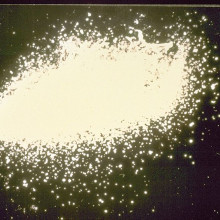
53:18 - Why don't we sneeze when we sleep?
Why don't we sneeze when we sleep?
We put this question to Matt James, University of Bristol...
I work in the Department of Physiology and Pharmacology at the University of Bristol and my interest in sleep is in its role in cognition, so how a good night's sleep helps us to learn remember things well.
Well, this is a bit like asking if the tree falls in the forest but nobody's there to hear it because it makes a noise, so perhaps we do sneeze in our sleep but not enough to wake ourselves up regularly or to wake ourselves fully. And what really concerns me as a scientist is that no one's really done the experiment.
So, the first thing that springs to mind of course was that if it's really question, where is the evidence that we don't sneeze in our sleep? I've spoken to friends with hay fever and they reckon they do sneeze in their sleep on occasions.
It's firmly the case that, during sleep, we're less responsive to sensory input so we're less excitable. So if there is stuff around likely to make us sneeze, it's probably less likely to make us sneeze while we're asleep as evidenced by the fact that we're lying around not interacting with it much.
But, really, whoever asked this question should do the experiment to find a stimulus - some black pepper let's say - that makes you sneeze when you're awake, and then ask someone to waft it under your nose while you're asleep and see if it makes you sneeze or not!
Maybe it's just the change in thershold, maybe it just takes more pepper to make you sneeze when you sleep?
When we sneeze, why does it come in twos and threes?
Ben - I think it's just the conditions that created the sneeze don't go away, so you sneeze again. I'm not sure though. If anyone else has any ideas, please get in touch.Chris - I'm just trying to think whether, I mean, there was someone I know who used to have some congenital problem that used to make him sneeze excessively. I think that there can be a sort of miswiring effect in the nervous system and also certain brain diseases and maybe in brain tumors can cause compulsive unrepetitive sneezing.Ben - And we know that we have the photic sneeze response as well so perhaps there's something going on there whereby if you're exposed to bright light, you'll sneeze but then you're still exposed to bright light so there's no reason why you wouldn't sneeze again.Chris - Possibly. That's also genetic and we know that about one person in five has that. This is when you're in a dark room, you go into the bright lights of the streets and suddenly, wow you feel the sneezing fit come on. No one actually knows exactly why it happens so if you have an answer, let us know.










Comments
Add a comment